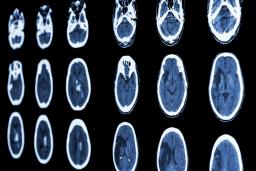Thrombectomy, i.e. mechanical opening of an occlusion in a blood vessel
Keywords:The mechanical opening of the vascular occlusion, i.e. thrombectomy, is used as a treatment form in the case of an obstruction in a large vein. Mechanical opening is possible, if the brain tissue without sufficient circulation has not yet been too badly damaged.

Thromboses of a cerebral artery are usually treated with intravenous thrombolytic therapy, which needs to be initiated within 9 hours from the onset of symptoms. In an obstruction of the largest artery, thrombolytic therapy is often not enough, but the artery must be opened mechanically.
We start thrombolytic therapy at Meilahti Tower Hospital every year for approximately 340 patients. Mechanical thrombectomy is used for treating approximately 260 patients a year. We are prepared to perform thrombectomy procedures 24 hours a day.
Brain damage can be prevented by swift action
The probability that a part of the threatened brain tissue can be saved decreases every minute. Thrombectomy is a situation resembling resuscitation in which every minute lost reduces the life expectancy by one week.
For a treatment decision, we need accurate information on the part of the brain which is affected by the obstruction and on how much brain tissue can still be saved. The location of the obstruction can be determined, when we scan the blood vessels in the brain. The size of the damage already created and the tissue that can still be rescued are assessed in situations where significant damage may have already developed. This is done by perfusion imaging, which measures cerebral circulation.
If oxygen deficiency has destroyed the parts of the brain behind the obstruction, a thrombectomy or thrombolytic therapy cannot improve the situation. Opening the obstruction will not repair the lesions, but can only save the portion of the tissue that has survived so far with the insufficient circulation.
The location of the cerebral embolism and the time from the onset of symptoms to the start of treatment affect the recovery prognosis and the need for rehabilitation. Permanent symptoms vary greatly. Two out of three of the cerebral infarction patients we treat as emergency cases recover well, and our mortality rate in strokes is the lowest in the world.